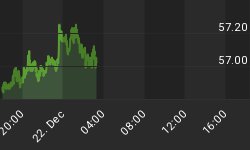From the spring of 1995 until last year the mantra first orchestrated by Robert Rubin and faithfully chirped by his successors from the US Treasury in Washington was that "a strong dollar is in the US national interest". During that period the trade weighted average of the dollar as traded in New York rose from $0.80 to $1.22.
The objective was a massive con to convince the foreign punters that the buck was a good investment that would appreciate thereby inducing long-term funds to the US to finance the large and growing US current account deficit. The policy worked for longer than one might have expected. Coupled with the myth of the productivity boom based on dishonest government accounting and outright fraud in the corporate sector, foreign direct investment funds were sucked in to the investment boom of the late 1990s.
But the appreciating dollar has come at a huge price. The current account deficit has expanded as imports grew and export growth was slashed. Since 1995 the deficit has grown from three to five percent GDP and this year is expected to be 6-7 percent GDP. The IMF and others have warned that no economy has avoided a violent adjustment with a current account deficit of more than 5 percent. The Asian economies with underlying growth rates of 6-8 percent crashed in 1998 with current account deficits of less than 5 percent. The US has a long-term sustainable growth rate of only about 2.5 percent.
The US has been trying to dump the strong dollar policy for about a year without saying they favoured a weak one, which could set off a panic in the currency. The financing flows have increasingly been from central banks as the private sector has turned skittish in the face of the investment bust.
But since the end of the Iraqi war things have changed. There is a smell of fear and panic in the air. The Administration needs to stimulate the economy to help President Bush's re-election prospects and a weaker dollar will help exports after a lag and, more importantly, stave off the threat of Japanese style deflation that is the all-consuming fear of some of the Fed Board. That accounts for the curious non-central banker musings of Greenspan and Bernanke talking of the potential use of the "electronic printing press" as well as Government intervention in the long-term Treasury market along the policy lines of the 1930s and 1940s.
Just this weekend Treasury Secretary Snow officially restated the strong dollar policy as one where the currency could not easily be counterfeited whilst stating its exchange rate against other currencies was not a primary concern. George Orwell would have been proud.
In the background, the Saudis and other Islamic oil producers, fearing the dollar will be used as a political weapon, have been musing about an adjustment in their reserves so that they would not be as exclusively dependent on the dollar. They are correct to be concerned, as should be the Europeans, who now are facing a payback time for their non-support in the Iraqi war. The US is probably not unhappy to see the higher Euro drive Germany into a renewed recession. That'll teach 'em!
Welcome to the post-globalisation beggar thy neighbour world!
The adjustment of the greenback is now accelerating and its value has been plummeting on the markets. Because of the lagged effects of a devaluation - the J curve effect - it will take time for the effects to feed through to the current account. In the meantime, despite intermittent rallies, the dollar can be expected to trend lower, perhaps very much lower. The potential for the situation to get out of hand is clearly present. If this happens, there will also be renewed consideration about the dollar's role as the world's sole reserve currency when it is also the world's largest debtor.
So serious is the situation that the Iraqi dinar with Saddam's face on the notes has been appreciating against the dollar since the end of the war. Why? Simple supply and demand. No more Saddam dinars being printed whilst Easy Al's printing presses are working overtime to defeat the bogey of deflation. Now it has also been announced that the Mugabe regime is so broke that it cannot pay for the ink and paper to print more Zimbabwean dollars. With no new supply of Zim dollars look for an appreciation in that currency too - and should Mugabe be removed look for a real adjustment in the currency.
In the meantime, hold those Euros, Australian and Canadian dollars. And, of course, that asset that is no-one's liability, gold, is in a renewed bull market in dollar terms.















